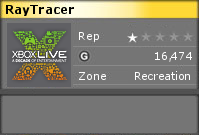Yesterday, I posted about services and reuse. More to the point, I posted why I don’t believe that business services will be reusable, any more than business objects were reusable. However, “can’t reuse business services” isn’t the whole story, because I believe in different kinds of reuse.
The kind of reuse I was writing about yesterday is typically referred to as “black box reuse”. The idea being that I can reuse the item (object or service) with little or no understanding of how it works. Thomas Beck wrote about colored boxes on his blog yesterday. Context impacts reuse – the environments in which you plan to reuse an item must be compatible with what the item expects. However, those contextual requirements aren’t written down anywhere – at least, they’re not encoded anywhere in the item’s interface. Those contextual requirements are buried in the code – the code you’re not supposed to look at because we’re striving for black box reuse. Opaque Requirements == No Possibility of Reuse.
As I wrote yesterday, David Chappell tears this type of reuse apart fairly adeptly. Money quote: “Creating services that can be reused requires predicting the future”. But black box reuse this isn’t the only kind of reuse. It’s attractive, since it’s simple. At least it would be, if it actually worked. So what kind of reuse doesn’t require predicting the future?
Refactoring.
I realize most people probably don’t consider refactoring to be reuse. But let’s take a look at the official definition from refactoring.com:
Refactoring is a disciplined technique for restructuring an existing body of code, altering its internal structure without changing its external behavior. Its heart is a series of small behavior preserving transformations. Each transformation (called a ‘refactoring’) does little, but a sequence of transformations can produce a significant restructuring. Since each refactoring is small, it’s less likely to go wrong. The system is also kept fully working after each small refactoring, reducing the chances that a system can get seriously broken during the restructuring
Two things about this definition imply reuse. First, refactoring is “restructuring an existing body of code”. It’s not rewriting that existing body of code. You may be making changes to the code – this certainly isn’t black box reuse – but you’re not scrapping the code completely and starting over. Second, refactoring is making changes to the code “without changing its external behavior”. You care about the code’s external behavior because somewhere, some other code is calling the code you’re refactoring. Some other existing piece of code that you don’t want to change – i.e. that you want to reuse.
When you refactor, you still reuse a significant amount of the code, but you’re not having to predict the future to do it. Refactoring**is the kind of reuse I believe in.
In his article, David talks about types of reuse such as business agility, adaptability and easily changeable orchestration. These look a lot more like refactoring than black box reuse to me. Unfortunately, David waves these away, saying “Still, isn’t this just another form of reuse?”. Reconfiguration hardly qualifies as “predict the future” style reuse that he spends the rest of the article arguing against. It’s just one paragraph in an otherwise splendid article, so I’ll give him a pass this time. (I’m sure he’s relieved.)

